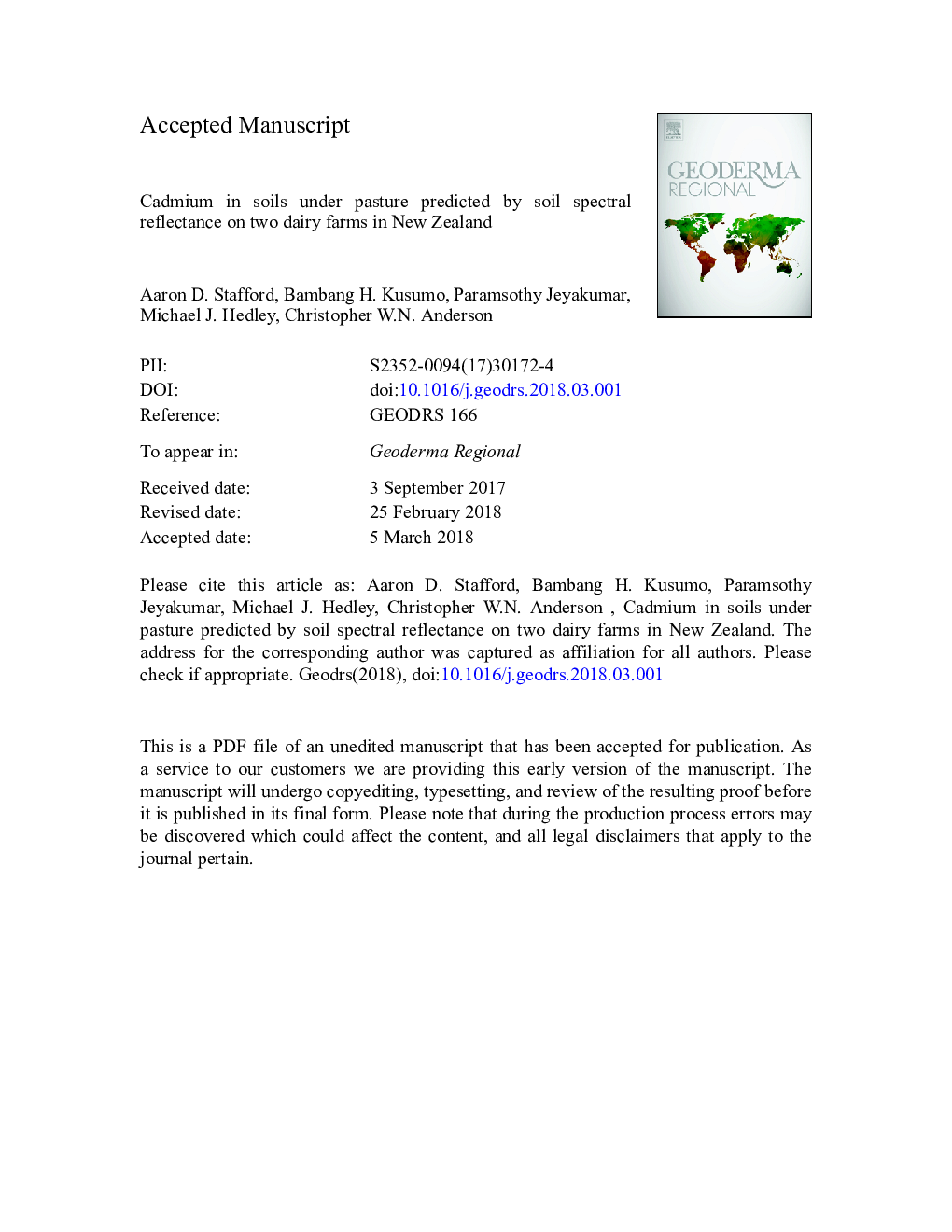| Article ID | Journal | Published Year | Pages | File Type |
|---|---|---|---|---|
| 8873224 | Geoderma Regional | 2018 | 36 Pages |
Abstract
In this study, visible and near-infrared reflectance spectroscopy (NIRS) was used to predict variation in total carbon (C), total nitrogen (N) and total cadmium (Cd) concentrations with soil depth. Soil cores were collected intact to 400-600â¯mm depth from two long-term dairy farms with contrasting soils, phosphorus (P)-fertiliser and land management history. Specific to each farm, a partial least squares regression (PLSR) model was developed to calibrate spectral reflectance data against total C and total N measured within 50â¯mm soil core depth increments. The resultant predictive models were able to successfully predict total soil C (R2â¯=â¯0.91-0.95, RMSECV (%)â¯=â¯0.40-0.64, RPDâ¯=â¯3.41-4.33) and total N concentrations (R2â¯=â¯0.91-0.92, RMSECV (%)â¯=â¯0.04-0.08, RPDâ¯=â¯3.43-3.57). In both farms there was a strong correlation (R2â¯=â¯0.83-0.90) between laboratory-measured total soil Cd and total C or total N. Based on this relationship, total soil Cd concentration was predicted from NIRS-predicted total C (NIRS-C) and/or total N (NIRS-N) concentrations. Soil profile total Cd concentrations and variation with depth was similar for measured and NIRS-C and/or NIRS-N predictions, although relationships between total Cd and total C or total N are site specific and non-transferable. Overall, NIRS shows promise as a rapid in-field diagnostic tool, allowing low-cost paddock-specific assessment of total soil C/N concentrations. This information will be useful to understand tillage history, and consequently may lead to a rapid assessment method for interpreting variation in soil total Cd concentrations between paddocks and with soil depth.
Keywords
Related Topics
Physical Sciences and Engineering
Earth and Planetary Sciences
Earth-Surface Processes
Authors
Aaron D. Stafford, Bambang H. Kusumo, Paramsothy Jeyakumar, Michael J. Hedley, Christopher W.N. Anderson,
